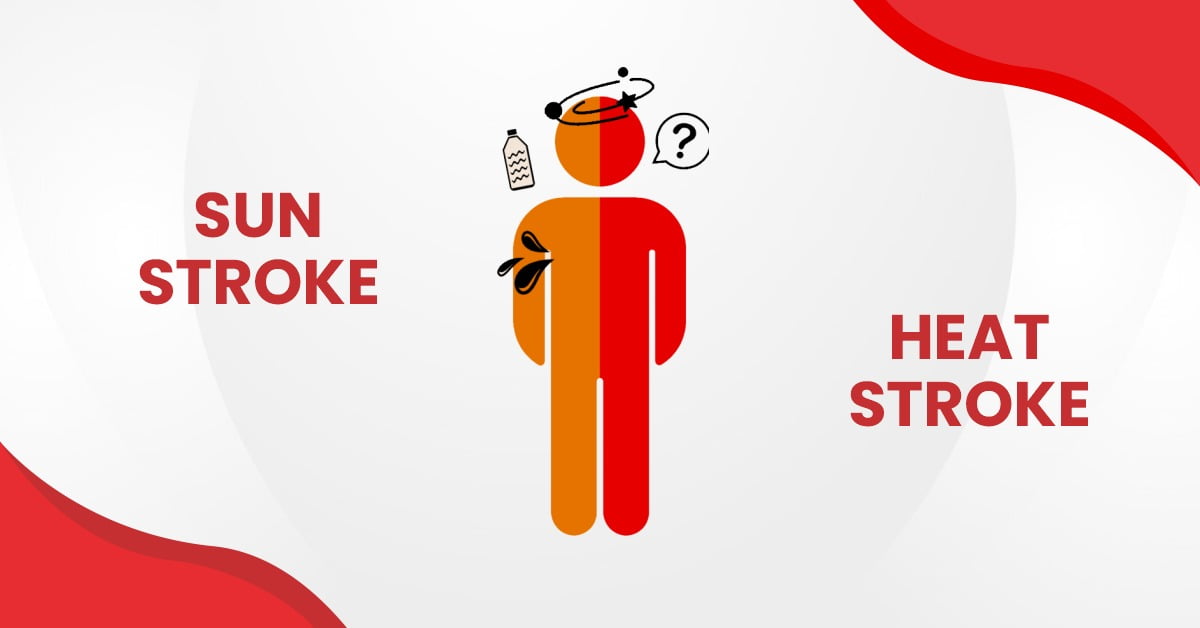


Change is the law of nature, and we see it fulfilled daily. God made the four seasons to let the world know that He rules the world eternally and remains faithful to us, notwithstanding our situation. He also made the seasons for our sustenance, enjoyment, edification, and well-being. But we, by our insolence and erratic behaviour, have turned them into the monsters they are today. Hence, the headlines on deaths due to heat are becoming more intense with each passing year.
ARTICLE: The cases of heat stroke vs. sunstroke have continuously increased over the past few years. It’s all because of the soaring temperatures that have become so unbearable that even the air conditioners have failed to give us the respite we crave.
Scientists attribute the rise in temperatures to human avarice and the exploitation of natural resources including rampant felling of trees and the drastic reduction in the green cover, which has had an adverse impact on the ecosystem. Whatever the reasons, the heat has escalated to an intolerable scale, and the increase in the number of heat stroke and sunstroke cases bears testimony to this fact. This might make you wonder which of the two is more harmful, triggering a heat stroke vs. sunstroke debate.
Before embarking on a heat stroke vs. sunstroke debate, let’s try to understand the similarities and differences between the two.
Let’s explore the sun stroke meaning and the meaning of heat stroke to understand how to avoid heat stroke.
SUNSTROKE: As the term suggests, this is the impact of the excessive heat of the sun on the head, particularly the brain. Sun stroke meaning, could therefore be inferred as the stroke or attack of the sun’s heat that affects the brain. Sun stroke occurs due to direct exposure to the sun.
Sun stroke symptoms usually include:
1. Headache
2. Nausea
3. Confusion
4. High body temperature
5. Extreme thirst
6. Loss of consciousness
7. Muscle weakness
8. Trouble breathing
If you or anyone you know has any of these sun stroke symptoms, you should see a doctor.
HEAT STROKE: Heat stroke varies from sun stroke as it affects the body’s homeostatic process and is often fatal. Heat stroke can even occur without direct exposure to the sun, especially if the temperatures are abnormally high. You should know the signs of heat stroke, whether you have suffered one or not.
If you experience symptoms quite similar to those of a sun stroke but have not been exposed directly to the sun, it could mean that you have suffered a heat stroke, which is potentially fatal. Signs of heat stroke include
1. High body temperature that is more than 104 degrees
2. Headache
3. Confusion
4. Nausea
5. Body ache
6. Profuse sweating
7. Irregular heartbeat
8. Fainting spells
If you or anyone around you experiences these signs of sun stroke, you should immediately see a doctor. Staying hydrated in hot weather is a prerequisite for avoiding sun stroke and heat stroke. Whether you are someone who spends most of his time indoors or a person who has to step outdoors as a part of his job requirement regardless of the high heat, you can avoid heat stroke and sun stroke by staying hydrated in hot weather. Besides, plain water and cooling drinks, including traditional beverages such as ‘lassi’, sugarcane juice, and sherbets, can aid you in staying hydrated in hot weather.
While heat stroke patients may require hospitalization, recovery from heat stroke could take a couple of days to a couple of months or even a year, depending on the intensity of the problem, the body type, and the medical history of the patient.
Everyone needs to be well-versed in heat stroke treatment first aid techniques. Heat stroke treatment first aid methods include
1. Fan the patient properly.
2. Administer ice packs on his head, neck, armpits, and groin.
3. Hydrate the patient, administering water and electrolytes orally if he is conscious.
4. Avoid caffeine and alcoholic drinks.
CONCLUSION: Keep your surroundings clean and cool by planting more trees, particularly those that provide shade. It will help keep the planet cool.
September 30, 2024
Recognize the Signs: Understanding Appendicitis Pain Symptoms
September 24, 2024
Unveiling the Truth: I-Pill Side Effects Every Woman Should Know
We use cookies to enhance your experience. By clicking "Accept", you agree to our use of cookies.